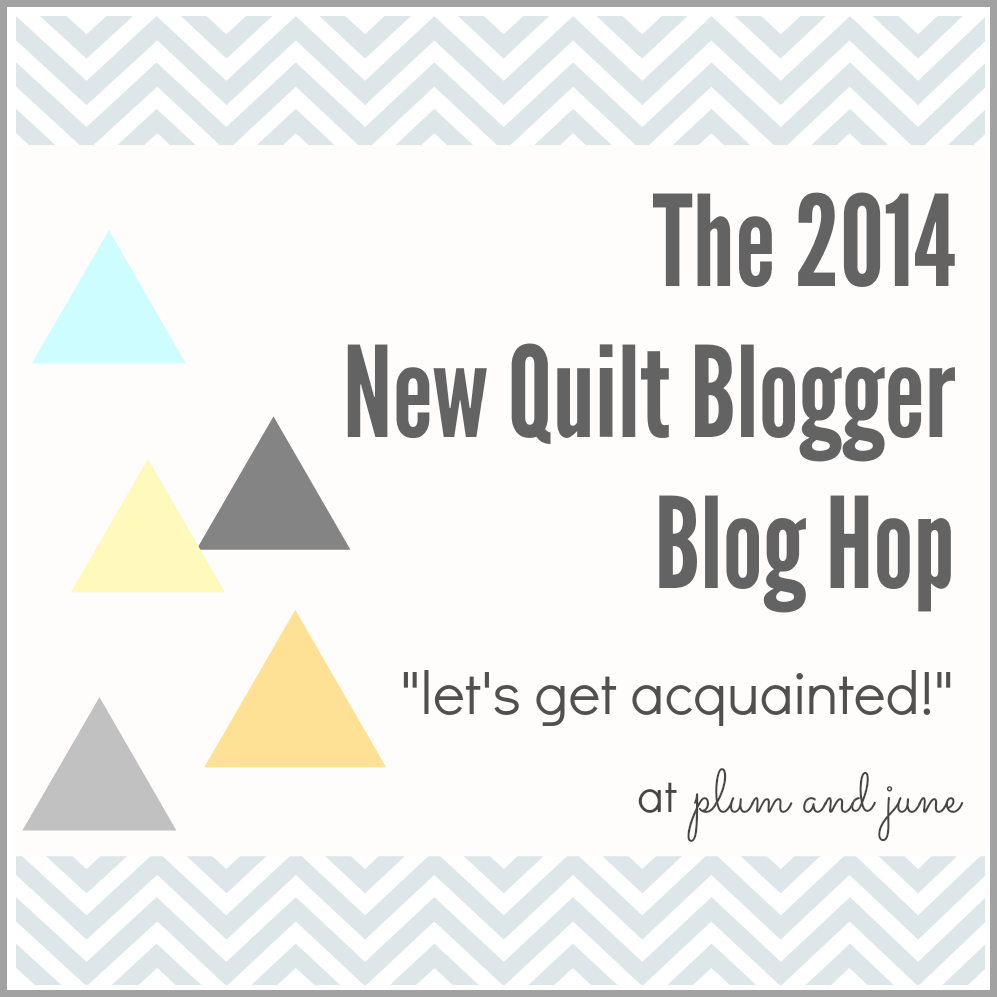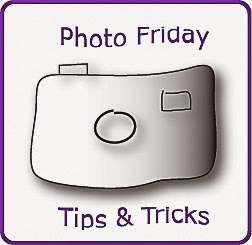 Beth at Plum & June organises a Let's Get Acquainted Blog hop for new bloggers and people with a blog less than 2 years old. We have been visiting each others blogs and asking technical questions of each other to improve our blog posts.
Beth at Plum & June organises a Let's Get Acquainted Blog hop for new bloggers and people with a blog less than 2 years old. We have been visiting each others blogs and asking technical questions of each other to improve our blog posts.One of the topics is photos (what size to use, how to take better pictures of our quilts and how to process those images later to make the most of them). As all my projects are works in progress at the minute and I have no Friday finish to share, I thought, this morning, I'd share a photo tip with you instead.
Ever come back from a holiday and all the photos taken outside look bluer than they should? Or ever had to struggle to get photos of your purple quilt looking purple and not a blue or red tint to them? A lot of problems with colour in images is down to White Balance.
You don't need a fancy camera to get good images. You do need good light and light has a colour temperature. Indoor light bulbs and candles give out a warm yellow/orange light. Fluorescent tends to a green/blue and daylight is different again. With all this variation, our eyes are amazing at adjusting to light and seeing white as white in all these situations. Great and all as modern cameras are, they cannot make this distinction all the time.
One of the things that I do, to almost all my images of quilts and blocks, is check & correct the white balance. Auto white balance will do a good job but there will be times when you need to override it to get the colours you want. In this first example the difference is quite subtle. There is an overall blue tint to the whites in this quilt top which as Kona Snow should be a little warmer.
 |
| Auto White Balance Outdoor overcast day |
 |
| Corrected White Balance |
This second example is probably a more common one where we take in progress shots indoors under tungsten light. This light is very warm and it is very obvious here the camera's auto white balance has not been able to keep the whites white.
 |
| Auto White Balance Indoor Tungsten Light |
 |
| Corrected white balance |
If you have already taken your images as JPEG and you can't go back and take them again because the block is already sewn in or the quilt has been given away, you can adjust your images in photo processing software. I use Lightroom for 90% of my photo processing. Lightroom was developed specifically for photographers and is designed around a workflow of adjustments from white balance and exposure through to colour & camera profiles. The cheaper of the Adobe products but still chock full of functionality is Photoshop Elements and it's often included free when you buy your camera.
To adjust white balance in Elements, go to the Expert menu, click on Enhance/Adjust Colours/Remove colour cast. A colour picker will appear with the message to click on an area that should be neutral in colour. I clicked on the white area marked by the black dot in the screenshot below.
Much more pleasing colours! You may have to hunt around and try a few places. I would avoid using black or unless you are good at spotting a neutral or medium grey in your photo I would stick to white. Too much correction will affect bit depth and reduce the quality of your image.
If you don't have a photo processing software try using the free online program PicMonkey. You will need to upload an image to edit and then go to Colours and use the neutral picker tool in the same way as Elements above.
PicMonkey is tons of fun and is worth playing around with. Hope this how to post helps you get the colours you want in your images!






Nice photo tips! I always use Pixlr when I edit, but I'm going to go check out PicMonkey now and see how I feel about it.
ReplyDeleteVery good article Ruth! Thank you! I found exposure is trickier than white balance. I can't live without photoshop!
ReplyDeleteHandy tips! Must look and see if I have access to Photoshop Elements.
ReplyDeleteThanks for the tips! I use PicMonkey when editing my photos and never even knew about the Color section with the neutral picker. I usually just did auto-adjust and left it at that.
ReplyDeleteI had no idea we could "fix" indoor night shots like this? Thank you for sharing!
ReplyDeleteThanks so much, Ruth. Very helpful.
ReplyDelete